10+ Sample Source Code License Agreement
-
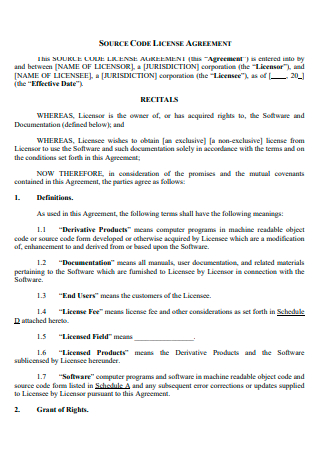
Source Code License Agreement Template
download now -
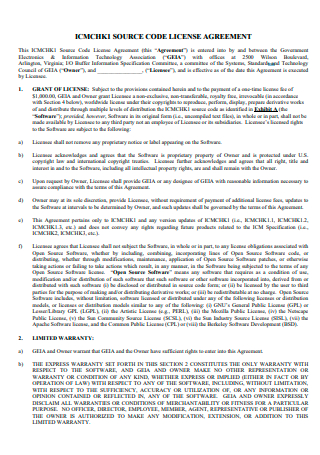
Basic Source Code License Agreement
download now -

Commercial Source Code License Agreement
download now -
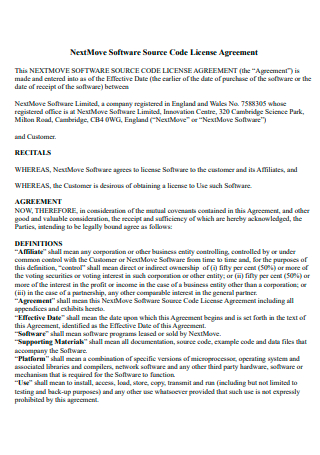
Software Source Code License Agreement
download now -
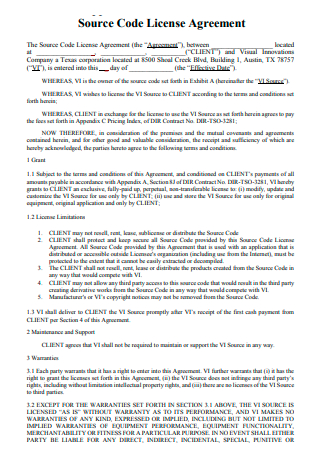
Formal Source Code License Agreement
download now -
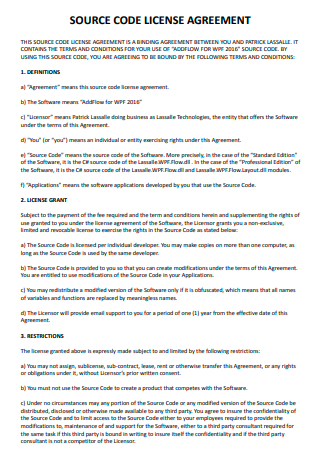
Source Code License Agreement in PDF
download now -
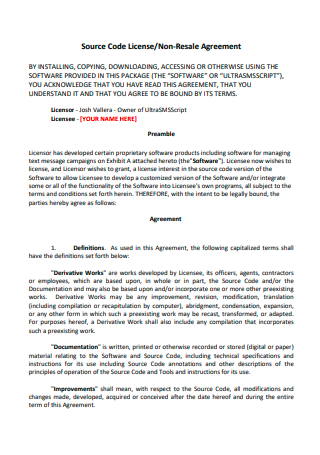
Source Code License Non-Resale Agreement
download now -

Source Code Site License and Confidentiality Agreement
download now -
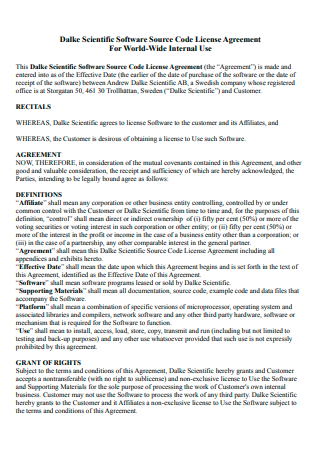
Scientific Software Source Code License Agreement
download now -
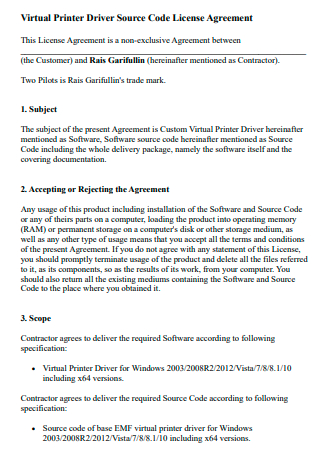
Driver Source Code License Agreement
download now -
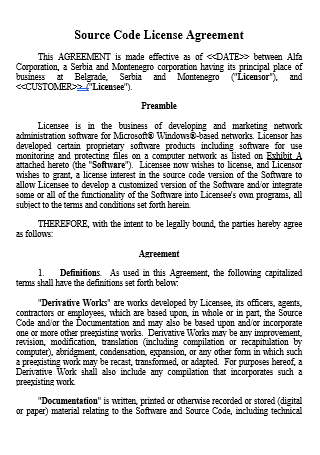
Source Code License Agreement in DOC
download now
What Is a Source Code License Agreement?
A source code license is a legal agreement that specifies the terms and conditions for using, modifying, and distributing the source code of a software program. Open-source licenses and proprietary licenses are standard source code licenses. Typically, the license contains information on copyright notice and ownership agreements and any limitations or restrictions on the code’s use.
Benefits of Source Code
With the accelerated rise of cybercrime and the increasing demand for system performance evaluation samples, IT security is assuming a more prominent role. Traditional tools such as firewalls and antivirus software cannot combat the complex, ever-changing threat environment that hackers and malware create. The expanding consensus in the industry is that adequate security must begin with the source code. Source code analysis is a static application security testing that analyzes the application’s source code for potential vulnerabilities. Here are some of the benefits of employing this method.
Tips to Improve Your Coding
As a programmer, you don’t just have to write code that works. You also have to write it in a way that makes it easy for your team or other people to understand. To write better code, you must understand it and ensure it stays the same.
1. Determine the Indentation and Adhere
Style is essential, not because it makes code appear pretty, but because it facilitates reading, editing, and comprehension. The code should be separated into logical components, and the style should be consistent throughout the document. In most programming languages, spaces and tabs do not affect the function. If you are utilizing an IDE, it is advised that you create a formatted configuration file so that everyone uses the same one. Every developer will have a preferred programming language or approach. If you begin working on code someone else writes, you must adhere to their process. There is no right or wrong, only how you feel most secure.
2. Make Comments
There is a love-hate relationship with comments, and there is a thin line between useful and unnecessary ones. Using them to explain the code, notably complicated passages, is, in fact, quite helpful. Your explanations will assist you and others in comprehending your actions. It may seem obvious to you when you write it, but will others working on the code understand it? Will you recall your actions after a month or a year? Comments are beneficial as long as they are brief and limited to essential passages. No matter how well-organized and uniformly indented the code is, too many comments on each line will render it utterly unreadable and cluttered.
3. Avoid Repeating Code
Writing lengthy lines of code makes reading extremely difficult, as the reader must move back and forth horizontally, losing all sense of what is written. Style and indentation will aid in this endeavor. Remember that the terminal window only allows 80 characters per line, so if the code is longer, it will be cut off, rendering it unintelligible.
4. Program Your Code into Compact Files
A file containing thousands of lines of code is only helpful to some. However, if the code is broken down into smaller files based on function or feature, it will be easier to locate the problem when it needs to be fixed. Having the entire code organized into files and folders is excellent for maintainability, mainly when multiple teams and individuals work on it.
How to Write Website Terms and Conditions
Your terms and conditions should begin with a summary of the essential conditions under which the agreement is concluded. This will often state the terms of the contract and what notice is required to get out of it. It should note any prerequisites for accepting the agreement, such as age. Typically, this “general information” will also include information about your business and contact details. Here are some instructions on how to make one if you’re still curious.
1. The Goods Or Services Offered
The minds of your customers should be clear regarding the services and products you provide; a thorough definition should be included here. Include this information in your terms and conditions if you sell electronic devices without batteries. Where applicable, ensure that your terms and conditions have the minimum duration of any contracts for the permanent or recurring supply of products or services.
2. Prices And Payment
You should plainly state your prices or indicate where they can be located, such as on the relevant products. As part of your terms and the duration for which any offer or price remains valid, you should specify whether the prices include any applicable VAT. Include any applicable shipping costs in this section. In addition, you should select when payment is due and what will occur if payment is not received.
3. Shipping And Delivery
Wherever you ship your products, you should include information regarding the anticipated duration and your responsibility. This may necessitate mentioning that third parties manage shipping and the applicable duty they share when this is the case. Additionally, what occurs if the order is not delivered should be stated here. Regarding the transportation policy, you should typically disclose the delivery timeframe – how long after the order is placed can the customer anticipate receiving the products? When there are various timeframes for different products, such as when the fabrication time for custom items is longer, this must be accounted for and clarified. You may also wish to specify what will occur if delivery is delayed for any reason and how consumers will be notified.
4. Guarantees And Warranties
The manufacturer or other warranties may cover some of the objects you sell. You should specify the warranty agreement in these instances. This may be measured when the order is received as an order confirmation or from the time of dispatch. You should also specify whether a replacement, repair, or refund would be provided if a defect was discovered during the warranty period.
5. Returns, Refunds, and Complaints
You must include your return policy on your website, even if it’s unlikely to be utilized frequently. This should be readily accessible, so many retailers have it as part of their Ts & Cs, which can be accessed via the website’s main menu or footer. The policy should explicitly outline the return and refund procedure for customers. Specify the consumer’s steps to return the product and any additional requirements, such as product condition and proof of purchase. Specify who is responsible for paying for any postage costs. In addition, you should specify the time it will take for your consumers to receive the refund and the form it will take. Certain items may not be returnable and may only be refunded in the event of a defect; therefore, it is important to have a file note of any exceptions here, such as sale items and handcrafted items. Indicate if you cannot provide substitute products or services of comparable quality and cost.
6. Exclusion Of Accountability
The limitation of liability clause specifies the extent to which you will be obligated to compensate another party for a breach of the Terms and Conditions. In most cases, this is simply an acknowledgment that your liability is limited to direct damages (those damages that could not have been avoided by breaching the contract) and that you are not liable for indirect damages.
FAQs
What is a source code contract?
A source code license agreement is an essential document that can be used to safeguard a company’s intellectual property. It specifies the terms and conditions under which software or other intellectual property may be used by a third party (IP).
Is source code a patent?
Even though source code may not be patentable, a software invention can still be patented. Assessing whether a software invention presents a technical solution to a technical problem is one method for determining whether it is the patentable subject matter.
Is code a language?
Coding is a type of computer language that facilitates communication with computers. Computers do not understand human dialects. The software enables interaction between people and computers. Code tells the computer what actions to take and which duties to complete.
Source code licenses are an essential component of software development and distribution. They enable software developer contracts and companies to protect their intellectual property while fostering the collaboration and innovation necessary for the software industry’s continued growth. Anyone intending to use, modify, or distribute software source code should thoroughly comprehend the applicable open-source or proprietary licenses.
